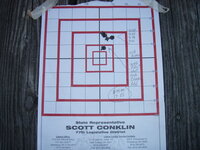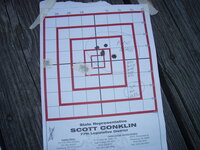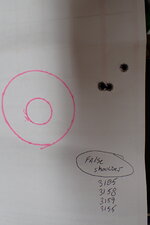jimbires
Handloader
- Aug 16, 2011
- 3,149
- 1,840
I've talked with a couple different guys on new vs. used brass . I'll do seating depth tests with new brass , but I won't do any powder work up with new brass . after the load confirmed , it surprises me how the two seem to shoot close to the same POI . you can see the used brass is about 50 FPS faster in this rifle . as far as hunting with these different brass , if you're not shooting longer than a couple hundred yards you won't have a problem . you can relate this velocity change to powder temp stability too , if you're hunting close it won't matter .











